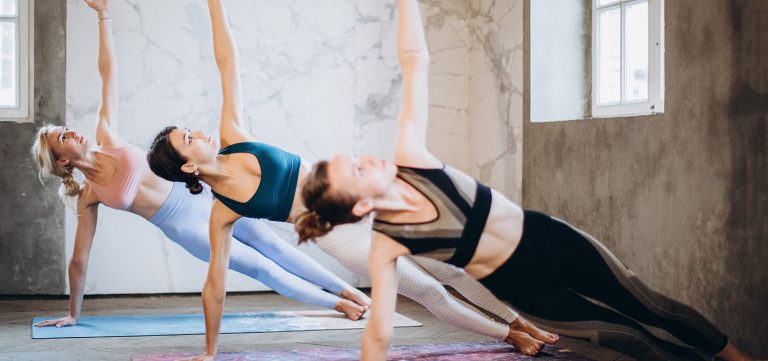“How body positivity is affecting modern fashion” is a collaborative post.
The body positivity movement has grown into a powerful force since its emergence in the late 20th century. This campaign, which advocates for the acceptance of all body types, is now continuing to reshape the fashion industry and challenge long-standing beauty ideals. Its rise, for instance, ignited a cultural shift that celebrates diversity, inclusivity, and authenticity. These are the very ideas that prompted the fashion world to rethink its approach to design, marketing, and representation.
This piece aims to explore the profound impact of the body positivity movement on modern fashion and how it is transforming the way we perceive and engage with style. Here are some of the notable changes brought forth by this inclusive movement.
Expanded size ranges: fashion for all sizes
It’s no accident that many brands are starting to offer more size ranges to accommodate a wider spectrum of body sizes. Historically, style brands primarily catered to smaller sizes, leaving individuals with larger body types with limited options. As body positivity gained ground, though, the demand for size-inclusive clothing became undeniable. This made it much easier to find clothes like jeans, dresses, and hosiery plus in extended size ranges, ensuring that people of all sizes could easily access stylish and well-fitting clothing.
Such a change has not only helped break down size-related barriers but also questioned traditional beauty standards. It sends a powerful message that beauty and style are not limited to a specific size range, encouraging individuals to embrace their bodies and express their personal style confidently.
Diverse representation: celebrating all body types
One of the body positivity movement’s aims is to emphasise diverse representation in the fashion industry. In the past, traditional beauty ideals dominated fashion, often promoting a narrow and unattainable standard of beauty. The momentum gained by the body positivity movement prompted fashion manufacturers and retailers to recognise the importance of celebrating all body types.
In response, these brands started featuring models of various sizes, shapes, ethnicities, and genders in their advertising campaigns and runway shows. Including plus-size models in high-profile campaigns has challenged the long-standing norms of the industry. This practice not only promotes inclusivity but also allows a broader audience to see themselves reflected in the fashion world. It sends a powerful message that fashion is for everyone, regardless of their body type.
Inclusivity in activewear and lingerie: empowering self-expression
Historically, the activewear and lingerie segments of the fashion industry emphasised unrealistic ideals of body shape and size. The body positivity movement changed this. As the campaign gained traction, activewear and lingerie brands began to shift their focus toward empowering self-expression. Instead of designing for limited sizes, many lingerie and activewear brands jumped at the opportunity to offer lingerie options for a wide range of body types. They emphasise that every individual deserves to feel confident and empowered, regardless of their body size.
Diversity on the runway: reflecting the real world
Fashion runways, which were once dominated by a narrow ideal of beauty, have become more diverse in response to the body positivity movement. Major fashion weeks around the world now feature a broader range of models, including those with different body types, genders, and identities. It reflects a growing sentiment that fashion should mirror the diversity of the real world. Aside from going against the grain, the act of reflecting realistic diversity on the runway encouraged designers to create clothing that appeals to a wider demographic. Slowly, the one-size-fits-all mentality started to dissipate, to be replaced by the idea that fashion is about self-expression for everyone, regardless of their background or identity.
Inclusive marketing campaigns: real people, real beauty
Fashion brands responded to the body positivity movement by revamping their marketing strategies to embrace inclusivity and authenticity. They became open to the idea of challenging the idealised and airbrushed images that were the norm in fashion advertisements—notions that contributed to unrealistic beauty standards. From here on out, the number of brands to feature real people with real bodies in their marketing campaigns started to grow. Many industry leaders even went as far as to pledge not to retouch their models and to fully showcase individuals with diverse body types and backgrounds.
This change is not lost on consumers, especially those who are keen to promote self-confidence and doubt the idea that perfection is the ultimate goal. More than that, this shift in perspective also began to encourage individuals to appreciate their uniqueness and aspire to authentic beauty.
Consumer demand for transparency: ethical and inclusive choices
Aside from celebrating the body, the body positivity movement is also keen on spreading the word about the impact of the fashion industry on body image and self-esteem. This means demanding transparency and authenticity from brands and asking them to live up to the image that they are trying to project to their customers. Knowing how businesses operate and affect communities empowers customers to support brands that represent their interests and carry out their operations in an ethical and responsible manner.
A good example of this is how consumers who increasingly support brands that align with their values, including those that promote body positivity and inclusivity. Brands that prioritise sustainability and ethical practices while also celebrating diverse body types have gained popularity among conscious consumers. This shift encourages brands to rethink their practices and embrace a more inclusive approach to fashion.
In summary, the body positivity movement has brought about significant changes in the fashion industry, from inclusive clothing designs to challenging beauty norms. These changes are reshaping fashion into a more inclusive, empowering, and diverse space that celebrates the beauty and uniqueness of every individual.






